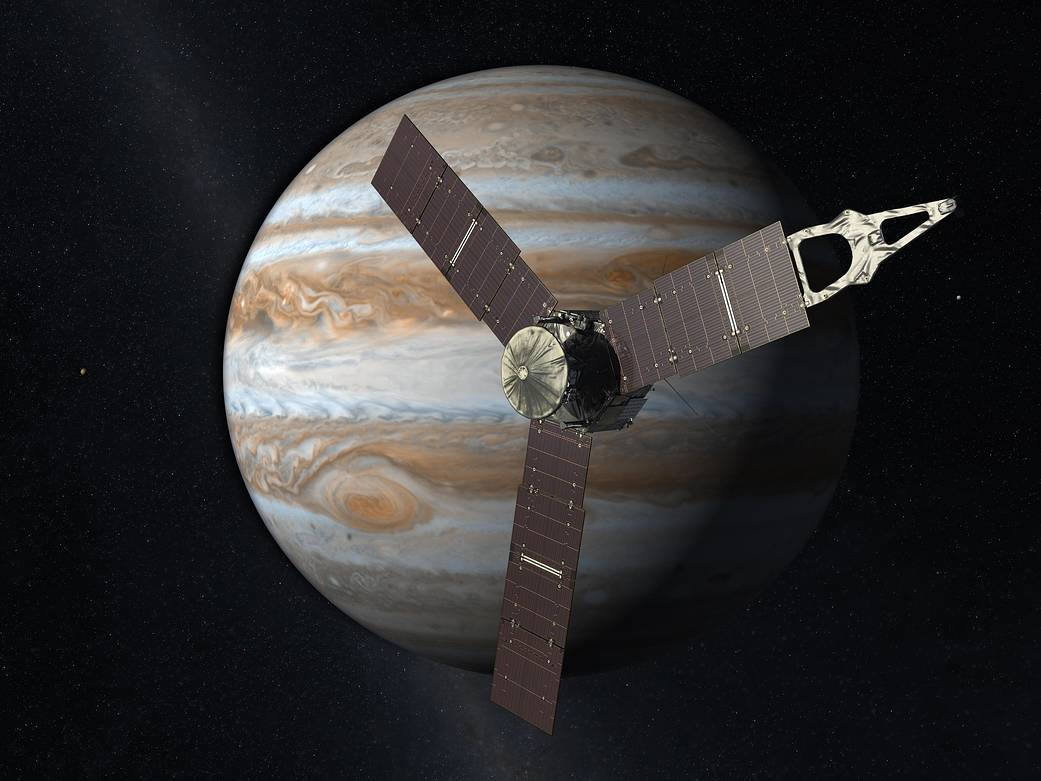This week in 2016, the Juno spacecraft arrived at Jupiter after a nearly five-year journey. Juno was launched from Cape Canaveral Air Force Station on Aug. 5, 2011, and has a principal mission of understanding the origin and evolution of Jupiter. Aboard the spacecraft are nine scientific instruments that will allow Juno to investigate the existence of a solid planetary core, measure the amount of water and ammonia in the planet’s deep atmosphere, map Jupiter’s intense magnetic field and observe the planet’s auroras. Juno’s mission will also let NASA take a giant step forward in understanding how gas giant planets form and the role they play in putting the rest of the solar system together. This illustration depicts Juno in an elliptical, polar orbit around Jupiter. Juno is part of the New Frontiers Program, managed at NASA’s Marshall Space Flight Center for the agency’s Science Mission Directorate. The NASA History Program is responsible for generating, disseminating, and preserving NASA’s remarkable history and providing a comprehensive understanding of the institutional, cultural, social, political, economic, technological, and scientific aspects of NASA’s activities in aeronautics and space. For more pictures like this one and to connect to NASA’s history, visit the Marshall History Program’s webpage. (NASA)
1 min read

























